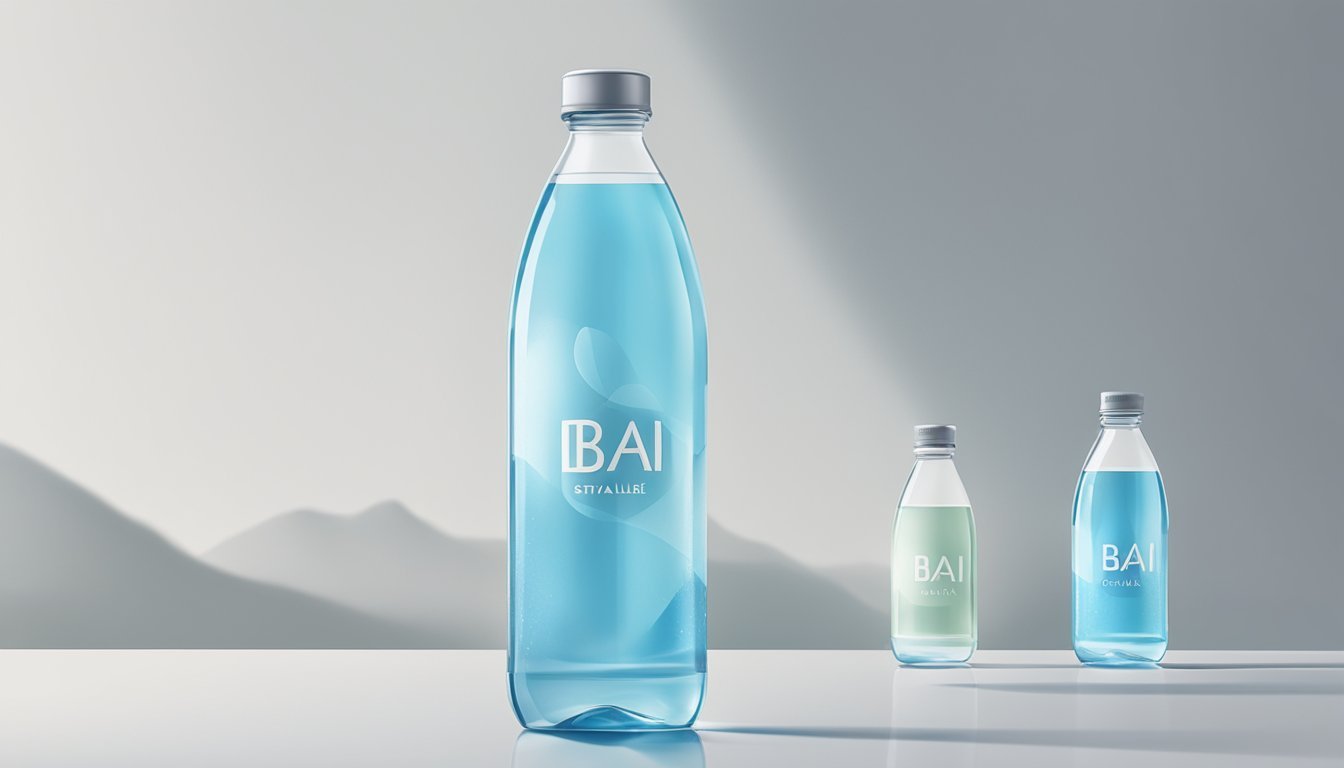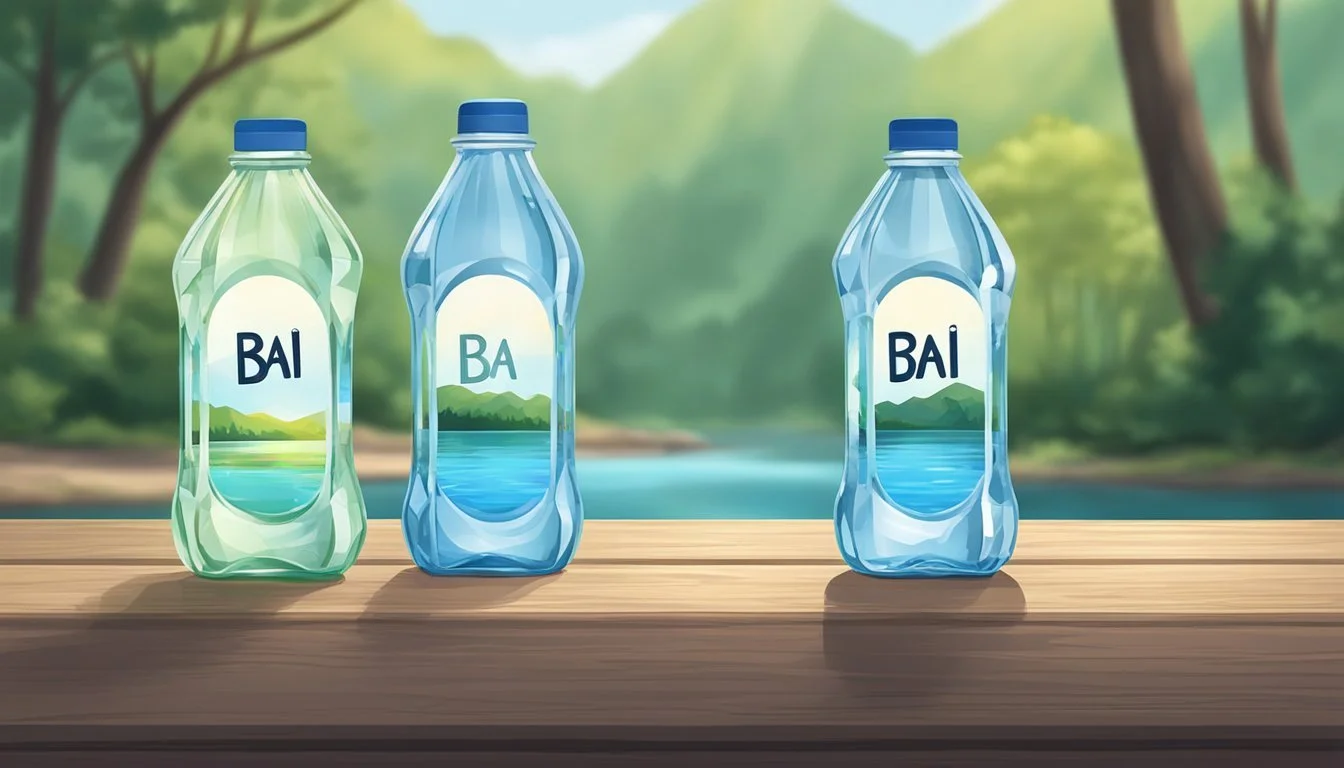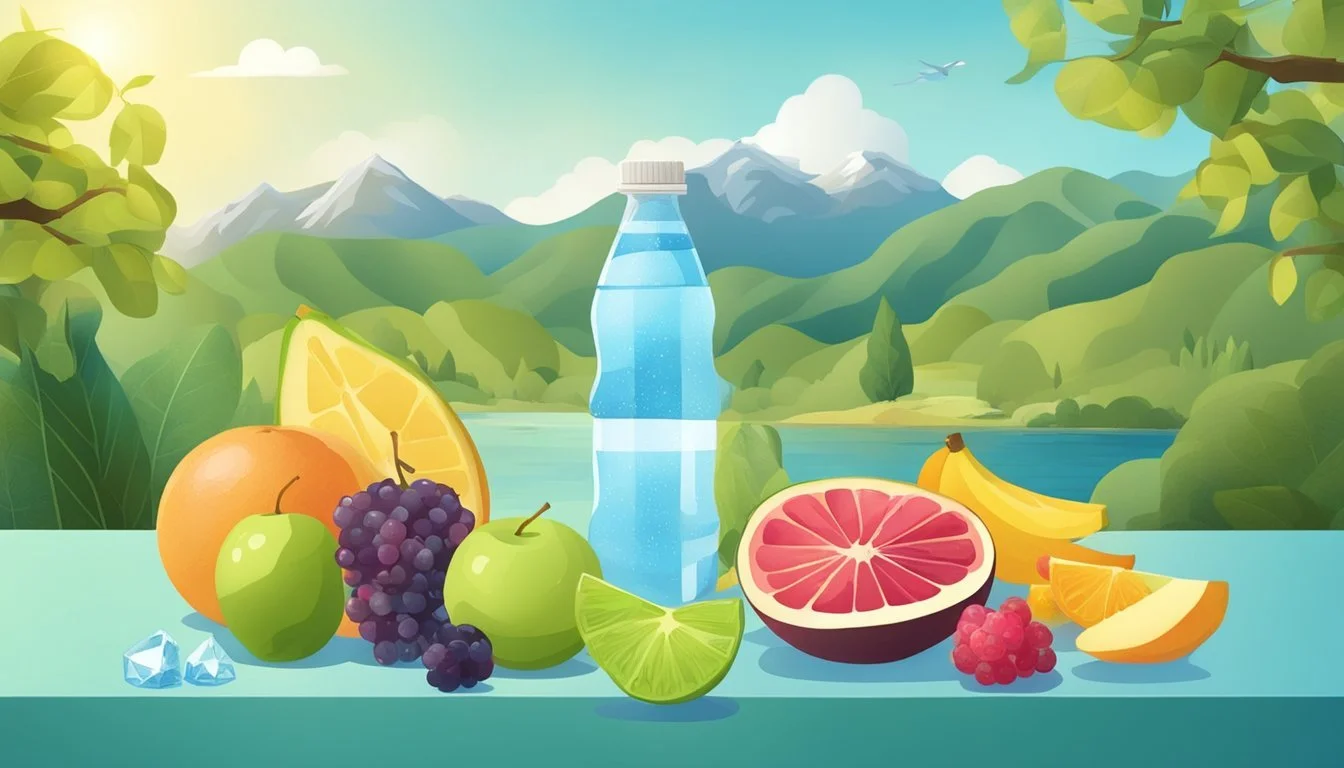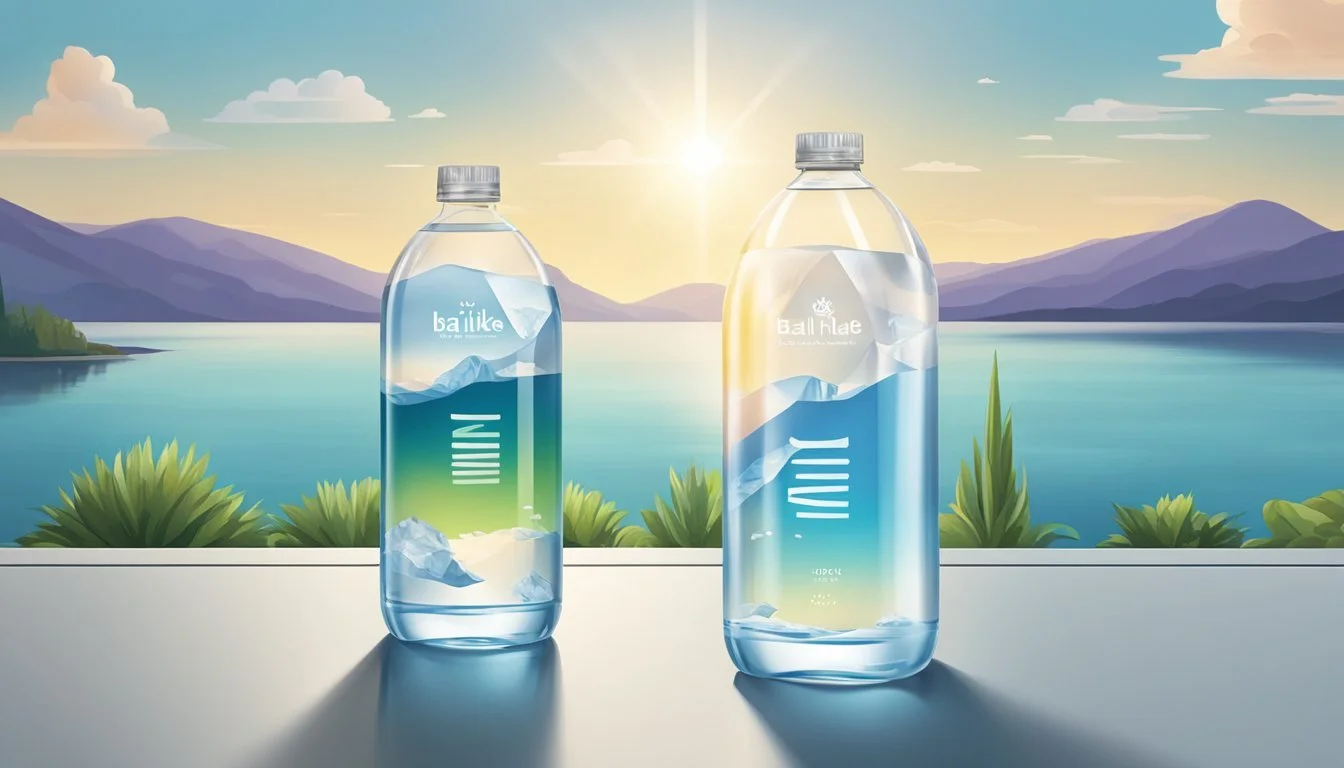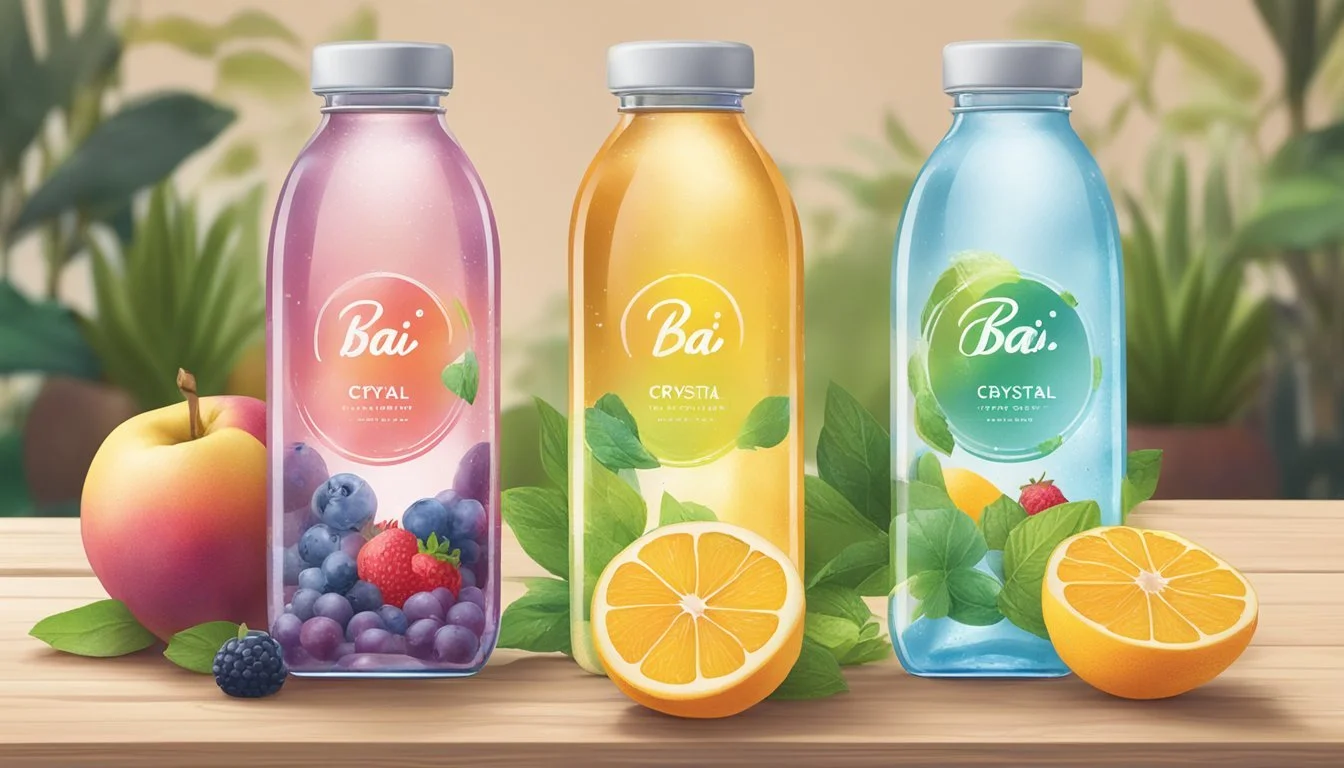Bai vs. Crystal Lake
The Ultimate Bottled Water Showdown
When it comes to choosing bottled water, consumers often find themselves comparing various brands to determine the best option for their hydration needs. Bai and Crystal Lake represent two different approaches within the bottled water industry. Bai distinguishes itself by offering flavored water enriched with antioxidants and low-calorie sweetening alternatives, while Crystal Lake prides itself on providing pure, natural spring water.
While Bai's flavored beverages attract those looking for a bit of taste and added health benefits, Crystal Lake appeals to purists who prefer their water untouched and straight from a natural source. The debate ultimately revolves around what the consumer values more – the simplicity and purity of Crystal Lake or the enhanced hydration experience from Bai's antioxidant-infused options.
For those prioritizing additional nutrients and a hint of flavor, Bai might be the superior choice. Conversely, those seeking untouched spring water would likely gravitate towards Crystal Lake. With these distinct differences, choosing between Bai and Crystal Lake comes down to personal preference and individual health priorities.
The Evolution of Bottled Water
Bottled water has a rich history dating back to the 18th century when the first commercial water bottling plant was established. This facility bottled natural spring water, which was highly valued for its purity and mineral content.
By the 19th century, bottled water's popularity surged as advancements in bottling technology allowed for improved quality and safety. Initially, the focus was on natural spring water, sourced directly from springs known for their clean and pure characteristics.
In the 20th century, the industry diversified. Municipal water, treated for contaminants, became a common source for bottled water. This period also saw the introduction of various types of bottled water, including mineral water, sparkling water, and distilled water.
The late 20th and early 21st centuries witnessed a significant shift. Consumers began demanding more options, leading to the rise of enhanced water products. Brands started infusing water with vitamins, minerals, and antioxidants, claiming additional health benefits.
Today, the bottled water industry is vast and varied. Brands like Bai offer water infused with antioxidants, while others emphasize the natural purity of their sources. The market caters to diverse tastes and preferences, offering everything from calorie-free options to flavored variants.
Bottled water continues to evolve, adapting to modern consumer needs. Whether sourced from natural springs or municipal supplies, the industry maintains a strong focus on providing safe, clean, and health-enhancing hydration options. The journey from simple spring water to today's multifunctional beverages illustrates the sector's dynamic nature.
Understanding Water Sources
Water sources play a crucial role in the quality and characteristics of bottled water brands like Bai and Crystal Lake. Focusing on spring and purified waters helps understand what each brand offers.
Spring Water and Its Origins
Spring water is sourced from natural springs found in mountain valley regions. Bai sources its water from carefully selected springs, ensuring it contains natural minerals that enhance taste and palatability.
Natural spring water, such as that from Poland Spring, boasts a crisp and refreshing profile. These origins ensure that the water is clean and full of beneficial minerals. The source and location of these springs can significantly affect the water's taste and mineral content.
Purified vs. Natural Water
Purified water undergoes extensive filtration processes to remove impurities. While Bai is known for its natural spring water origins, Crystal Lake typically offers purified water options.
Purification methods include distillation, deionization, and reverse osmosis. Unlike natural spring water, purified water may have minerals added back for taste. This process ensures the water is free from contaminants, providing a clean and neutral taste. The source of purified water is less about the origin and more about the rigorous techniques used to achieve purity.
Comparing Bai and Crystal Lake
Bai and Crystal Lake bottled waters differ in taste profiles, nutritional content, packaging, and environmental impact, as well as price and accessibility.
Taste Profiles
Bai offers an infused flavor profile with notes like antioxidants from coffee fruit extract and vitamin C. This creates a slightly tangy finish that some find refreshing. Crystal Lake, on the other hand, prides itself on pure, unadulterated water with no added flavors, maintaining a crisp and clean taste. Preferences for either brand may depend on the consumer's desire for either a flavored or pure water experience.
Nutritional Content
Bai water includes added electrolytes, antioxidants, and vitamins which contribute to its low-calorie profile of only 10 calories per bottle. The presence of 1 gram of sugar may also appeal to those looking for a mildly sweetened option. In contrast, Crystal Lake water remains strictly pure with zero calories, no sugar, and no additional nutrients, making it ideal for those seeking untouched hydration.
Nutritional Aspect Bai Crystal Lake Calories 10 per bottle 0 Electrolytes Yes No Antioxidants & Vitamins Yes No Sugar 1 gram 0
Packaging and Environmental Impact
Bai water is commonly packaged in plastic bottles, which can raise environmental concerns despite being recyclable. Some variations may offer eco-friendly carton packaging. Crystal Lake uses primarily glass and carton options, which are considered more sustainable and have lesser environmental impacts. Both brands aim for recyclable packaging, but Crystal Lake’s commitment to non-plastic materials makes it stand out in sustainability measures.
Price and Accessibility
Bai is widely available in major retail stores, convenience shops, and online platforms, making it easy for consumers to find. It is moderately priced, considering its added nutritional benefits. Crystal Lake tends to be priced higher due to its premium packaging and the perception of purity. Availability is somewhat limited to specialty stores and select retailers, potentially making it less accessible than Bai.
In conclusion, when choosing between Bai and Crystal Lake, consumers must consider taste preferences, desired nutritional benefits, packaging sustainability, and budget.
Ingredients and Health Benefits
Bai and Crystal Lake bottled waters each offer unique blends of ingredients and distinct health benefits. Understanding these differences is essential for choosing the right option for your hydration needs.
Assessing Key Ingredients
Bai: Bai water features filtered water and a distinctive mix of sweeteners and natural flavors. Its primary sweetener is erythritol, combined with stevia leaf extract. These help maintain its low calorie count, at just 10 calories per bottle. Bai also includes various fruit juices for natural flavor and vegetable juice concentrates for color.
Crystal Lake: Crystal Lake, being a pure water product, contains no added ingredients, flavors, or sweeteners. This means it has zero calories and no artificial additives. The focus is purely on hydration without introducing any additional substances into the body.
Potential Health Benefits
Bai: Bai water offers several health benefits beyond basic hydration. It is rich in antioxidants, sourced from coffee fruit extract, and vitamins like vitamin C, which support overall health and immune function. The absence of artificial sweeteners and low sugar content (only 1 gram) make it a healthier alternative to sugary drinks.
Crystal Lake: Crystal Lake provides the essential benefit of pure hydration. With zero calories and no additives, it is ideal for those looking to avoid any extra ingredients. Pure water is vital for maintaining bodily functions, improving energy levels, and supporting healthy skin. Crystal Lake’s simplicity makes it a perfect option for individuals focused on straightforward hydration without added components.
Both Bai and Crystal Lake have their unique attributes, catering to different preferences and health goals.
Bottled Water Brands Overview
This section presents an overview of popular bottled water brands and examines the importance of label transparency and consumer trust.
Popular Bottled Water Brands
Among the array of bottled water brands available, some stand out due to their quality and distinctive features. Evian, sourced from the French Alps, is popular for its mineral-rich content. Fiji water, from an artesian aquifer in Fiji, claims to have a unique mineral profile and soft taste. Voss from Norway is famous for its stylish glass bottles, catering to a premium market.
Smartwater, a product of Glaceau, uses vapor distillation and adds electrolytes for taste, while Dasani and Aquafina are two mainstream brands backed by Coca-Cola and PepsiCo, respectively. They offer purified water through various filtration methods.
Icelandic Glacial is notable for its source from Iceland’s Ölfus Spring, boasting naturally low mineral content. Mountain Valley and Arrowhead offer spring waters with regional significance in the United States. Poland Spring, another well-recognized brand, draws water from multiple sources in Maine.
Pure Life by Nestlé, though mass-produced, aims to provide affordable bottled water. Deer Park and Ethos Water have carved out niches with regional springs and social responsibility initiatives, respectively. San Pellegrino rounds out this list with its iconic sparkling mineral water known for a robust mineral flavor.
Label Transparency and Consumer Trust
Label transparency is vital for building consumer trust with bottled water brands. Shoppers expect clear, accurate information about the water's source, purification methods, and mineral content. Brands such as Evian and Fiji often emphasize their pristine sources and rigorous quality controls on their labels.
Smartwater highlights its vapor-distillation process, ensuring consumers understand its purification steps. Dasani and Aquafina provide detailed filtering process descriptions and ingredients on their labels, catering to health-conscious customers.
Environmental impact and sustainability claims also play a crucial role. Ethos Water markets its social responsibility efforts, directly addressing global water crises. Voss uses its packaging to indicate a commitment to minimal environmental impact.
Transparency fosters loyalty. When brands like Icelandic Glacial disclose mineral content and pH levels, they provide assurance and reliability. Trust built through transparency, accuracy, and honest marketing helps consumers make informed choices, securing their allegiance to the brand.
Packaging Innovations
Packaging plays a crucial role in the bottled water industry, with companies continuously seeking advancements that offer environmental benefits and improve user experience.
Advances in Eco-Friendly Packaging
Bottled water companies are increasingly investing in eco-friendly packaging solutions to reduce environmental impact. Bai has explored the use of recyclable plastic bottles, emphasizing reduced plastic waste. Their focus is on BPA-free plastic, which can be recycled multiple times without degrading quality.
Glass bottles are being reintroduced by some brands due to their recyclability and non-toxic nature. These bottles, while heavier, are reusable and present fewer health risks than plastics.
Cartons, like those used by Boxed Water, offer a biodegradable alternative. Made primarily from paper, these cartons decompose more quickly than plastics and reduce long-term waste. However, they are lined with a thin layer of plastic for waterproofing, which can pose recycling challenges.
Innovations such as edible water packaging are also emerging. These innovative approaches encapsulate water in biodegradable membranes, reducing the need for traditional containers altogether.
The shift toward environmentally friendly options reflects a commitment to sustainability, aiming to decrease environmental footprints while satisfying consumer demand for convenient hydration.
Flavor Profiles and Variety
When comparing the flavor profiles and variety of Bai and Crystal Lake, it's crucial to examine how each brand approaches sweeteners and the differences between fruit-infused and plain water.
The Role of Natural and Artificial Sweeteners
Bai incorporates natural sweeteners like stevia and erythritol, providing a sweet flavor without adding significant calories.
A single bottle of Bai typically contains about 1 gram of sugar and 10 calories, making it an appealing option for those mindful of their sugar intake. The combination of coffee fruit extract and added vitamins, like vitamin C, also enhances its flavor profile, providing a unique taste experience.
Crystal Lake, on the other hand, prides itself on offering pure, natural spring water without any added sweeteners. This brand focuses on maintaining the natural taste of the water, which may appeal to those who prefer a more straightforward, unaltered flavor in their bottled water.
The choice between these two often hinges on personal preference for sweetened versus non-sweetened water.
Fruit-Infused vs. Plain Water Taste Test
Bai's fruit-infused waters come in a variety of flavors, such as Brasilia Blueberry, Kula Watermelon, and Costa Rica Clementine. These options cater to those who enjoy a flavorful twist in their hydration routine.
The presence of antioxidants from coffee fruit extract not only contributes to the taste but also adds a layer of potential health benefits.
In contrast, Crystal Lake focuses on providing plain water sourced from natural springs. This product is ideal for those who prefer the clean, crisp taste of unsweetened water.
Ultimately, a taste test may reveal that preference for either Bai or Crystal Lake depends largely on an individual's desire for either a hint of fruit flavor and sweetness or the pure, unembellished taste of natural spring water.
Environmental Considerations and Impact
Choosing between Bai and Crystal Lake for bottled water involves evaluating several environmental factors. Key considerations are the carbon footprint of production and distribution, as well as the sustainability measures taken by each brand.
Bottled Water and the Carbon Footprint
The carbon footprint of bottled water production is significant. It includes the extraction and transportation of the water, the manufacturing of plastic bottles, and the distribution to retailers.
Bai’s flavored water products likely have a slightly higher carbon footprint due to additional ingredients.
In contrast, Crystal Lake, if it sources locally and uses minimal processing, may have a lower environmental impact.
Sustainable Practices in the Bottled Water Industry
Sustainability practices in the bottled water industry focus on reducing waste, conserving resources, and utilizing recycled materials.
Bai emphasizes the use of recycled materials in its packaging, aiming to lessen waste.
Crystal Lake might use sustainable water management practices and eco-friendly packaging, showing a commitment to environmental stewardship.
Both brands could adopt more environmentally friendly practices, such as reducing single-use plastics and promoting recycling initiatives, to further minimize their impact.
Health Implications of Bottled Water
Choosing bottled water over tap water can raise various health considerations that impact everyday wellbeing. It can involve evaluating potential contaminants, safety concerns, and hydration benefits.
Addressing Contaminants and Safety Concerns
One important aspect of bottled water health implications is ensuring it is free from contaminants. Unlike tap water, which is regulated by the Environmental Protection Agency (EPA), bottled water is regulated by the Food and Drug Administration (FDA). This means bottled water must adhere to strict safety standards, but contaminants like lead can still be present if the water source or packaging process is compromised.
Safety concerns also extend to the physical integrity of plastic bottles. Chemicals like Bisphenol A (BPA) can leach into the water, particularly if bottles are exposed to heat or stored for long periods. Always looking for BPA-free labels and checking expiry dates can mitigate some of these risks. Consumers seeking further reassurance may turn to brands that carry NSF certification, indicating additional independent testing for contaminants.
Hydration and its Effects on Health
Bottled water plays a vital role in maintaining hydration, a key factor for overall health. Proper hydration supports critical bodily functions including digestion, circulation, and temperature regulation. Drinking adequate water can help prevent issues like dehydration, which can cause symptoms ranging from mild headaches to severe complications like kidney stones.
Certain bottled waters, like Bai, offer more than just hydration. They include added antioxidants and vitamins, such as Vitamin C, which might appeal to those looking for supplementary health benefits. This is distinct from pure water options like Crystal Lake, which provides hydration without additional ingredients. For those with dietary restrictions, ensuring bottled water is gluten-free can also be a consideration, although most bottled waters naturally meet this criterion.
Proper hydration is essential for everyone, and selecting the right bottled water can support this fundamental health goal.

